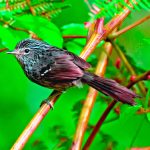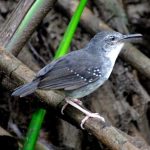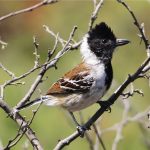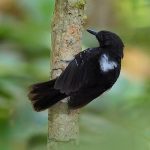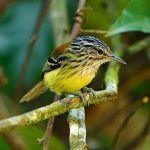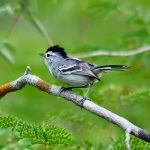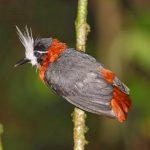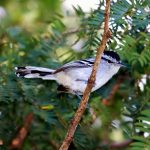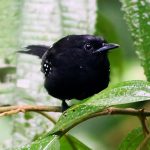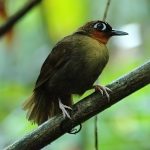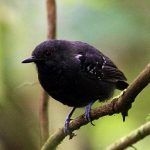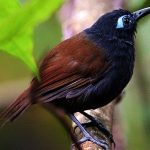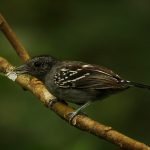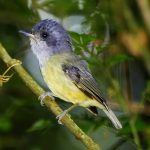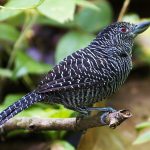Bicoloured antbird
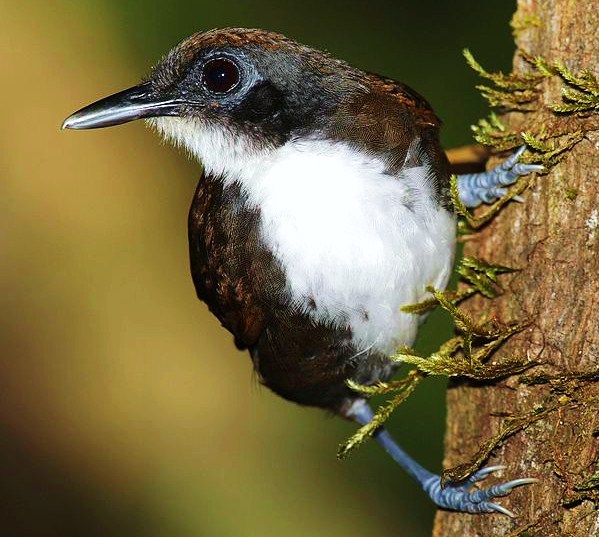
Gymnopithys leucaspis
 |
| Photo by Matt Deres (Wikipedia) |
Common name:
bicoloured antbird (en); mãe-de-taoca-bochechuda (pt); fourmilier à joues blanches (fr);hormiguero bicolor (es); braunweißer ameisenvogel (de)
Taxonomy:
Order Passeriformes
Family Thamnophilidae
Range:
The bicoloured antbird is foung from Honduras, across Nicaragua, Costa Rica and Panama, and into Colombia, Peru and north-western Brazil.
Size:
These birds are 19-20 cm long and weigh 30-32 g.
Habitat:
They are mostly found in tropical and subtropical moist lowland forests, but can also be found in mountain forests up to an altitude of 1.700 m.
Diet:
The bicoloured antbird is an obligate ant-follower, eating insects and other arthropods that the army ant swarms stirs from the leaf litter.
Breeding:
These birds are monogamous, mating for life. Both sexes build the nest, a cup of vegetation placed in a fork in a branch. There the female lays 2 eggs which are incubated by both parents for 15-16 days. The chicks are fed by both sexes and fledge 14 days after hatching. After fledging, the chicks spend the first few days well hidden as the parents bring them food, and they only become fully independent a couple of months later.
Conservation:
IUCN status – LC (Least Concern)
The bicoloured antbird has a very large breeding range and, although the global population size has not been quantified, the species is described as fairly common. This population is suspected to be in decline owing to ongoing habitat destruction in large parts of its range.
